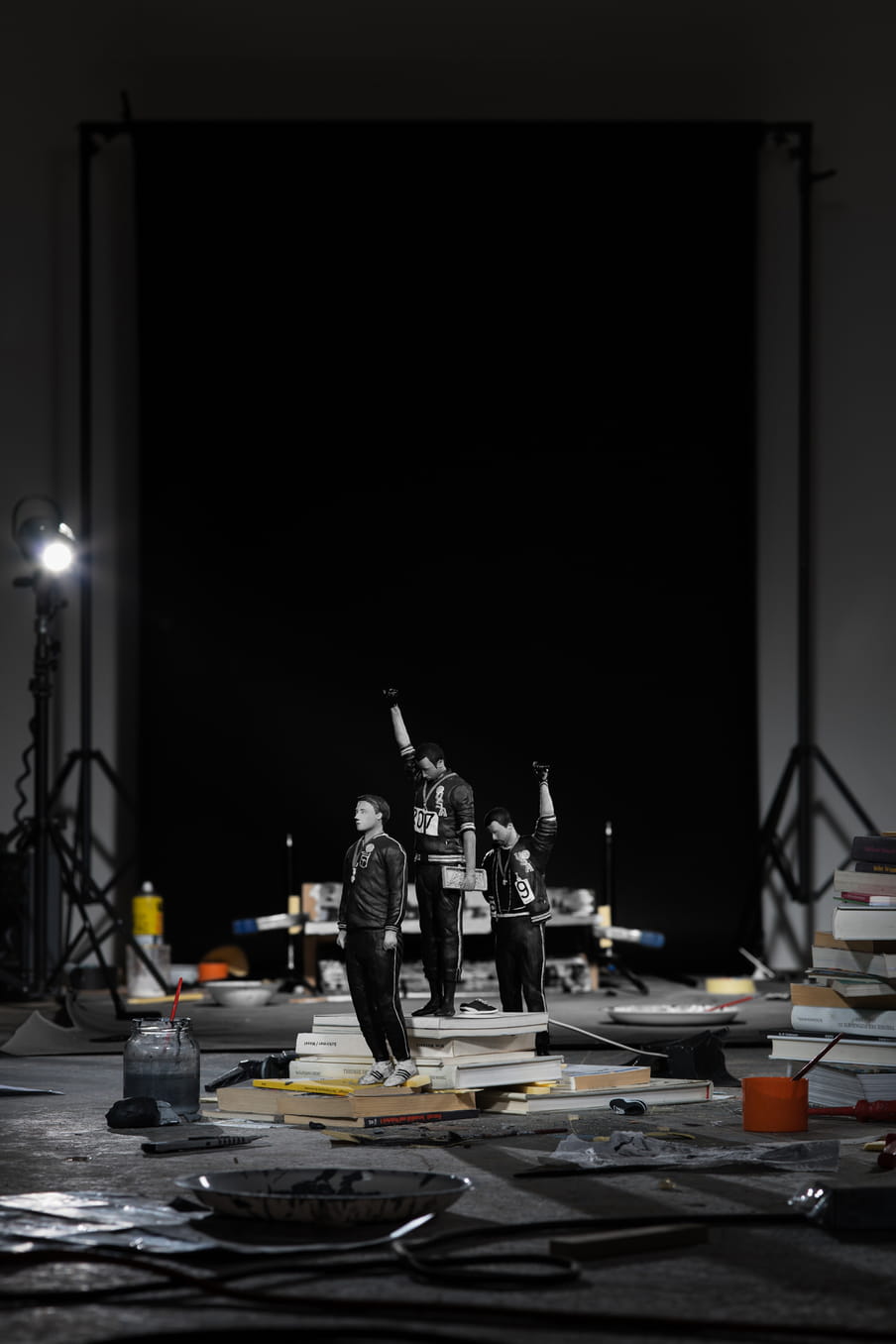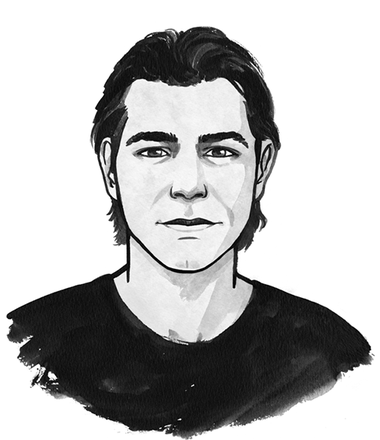Even if you haven’t been following the news particularly closely the past couple of years, it probably won’t have escaped you that a certain word has been getting a lot of attention: truth.
So it turns out my philosophy degree can be put to good use after all.
Ever since the election of pathological liar Donald Trump in 2016, Britain’s decision to leave the EU based on a misinformation campaign, and our social media timelines flooded with fake news stories, a new theory has emerged: we now live in a “post-truth” society. A world in which truth no longer matters, where facts are countered by “alternative facts”, and reality is more about your media diet than about the world as it is.
It’s not hard to see why people feel that “truth” has become irrelevant, given how ubiquitous political lies and conspiracies posing as journalism are nowadays. It’s no surprise, either, that all of this is often linked to the rise of populism more generally. In a society that no longer believes in the importance of truth, populism can certainly thrive as never before.
But an obvious question we often forget to ask in all this theorising seems to be: what is truth? Or more specifically: if we are “post-truth” as a society, which truth have we left behind? And perhaps even more importantly: what, if anything, has taken its place?

Three types of truth: metaphysical, scientific, and constructed
To answer those questions, I would first like to examine the three types of truth that have come to dominate (western) public discourse over the past centuries – and are still most prevalent in our societies today.
First up is metaphysical truth, characterised by the idea that truth exists outside of earthly reality, and is therefore beyond human reach. It resides in what’s often called the realm of the transcendent and is accessed through revelation and faith. It cannot be known; it can only be believed – the basis of every world religion.
Second is scientific truth, characterised by the idea that truth is very much within human reach and can be found through reason, perception and experiment. Modern science is based on this conception of truth. It is independent from how we, human beings, see the world – also known as “objectivity”. Yet at the same time, this type of truth is closer to humankind than the transcendent, in the sense that it is actually attainable. People can access it through knowledge: you don’t need to believe it, you can know it.
‘There are no facts, only interpretations’ – Nietzsche
Lastly, there is constructed truth, characterised by the idea that truth is not “out of reach”, or even independent from human perception at all. On the contrary, we make truth ourselves. This school of thought does not regard truth as something transcendent or superhuman, nor as something objective or findable. Instead, truth is subjective and made by us. Or to put it more simply: it would not exist if we didn’t exist. The German philosopher Friedrich Nietzsche perhaps best summarised its essence when he wrote: “There are no facts, only interpretations.”

Three ages of truth: premodern, modern and postmodern
Although all three types of truth have been present in all societies throughout history, different types have been dominant in different eras.
During the pre-modern period in the west (roughly everything up to the 16th century), metaphysical truth captured the zeitgeist. During the modern era, roughly between the 16th and 20th centuries, scientific truth became the dominant narrative. And during what became known as postmodernity, roughly from the 20th century onwards, the idea of constructed truth became increasingly accepted.
Just to clarify: no era has ever abandoned any type of truth. In our current, scientifically advanced society, transcendent truths continue to play an important role. And even though we often characterise our society as secular and postmodern (“God is dead”, everything is “just an opinion”), belief in things such as objectivity, facts, and reality is equally widespread.
So our society is a mixture of all types of truth – in fact, all of the social debates being waged can, in essence, be traced back to a struggle between these three truths. Debates, in the end, all boil down to a very fundamental question: what is truth, really?

Truth as a product, driven by commerce
If these three types of truth are still prominent in our society, why do so many commentators, scientists and Twitterati speak of a society that is “post-truth”? I believe the answer is to be found in a fourth shape that truth has taken: truth as a product.
In our age, let’s call it post-postmodernity, truth is primarily shaped by the laws of commerce.
The most important reason for this is a development that has been picking up speed, near the end of the 20th century especially: the commercialisation of our information infrastructure. Market forces in healthcare and education have been discussed and criticised extensively, but there has been far less debate about the market forces at work in the production of our worldview.
Almost all influential information about the world around us – from television to books to news sites – is in the hands of some 30 multinationals. Hypercommercialised corporations that are primarily driven by ratings, clicks, ad revenue, and – of course – profit maximisation.

Google and Facebook: the pillars of digital capitalism
The beginning of the 90s saw another development: the emergence of what Belarusian thinker Evgeny Morozov calls “digital capitalism”. Its history is too broad to do justice to here, but it boils down to this: our digital information infrastructure (computers, smartphones, the internet), invented by universities and armies around the globe and funded primarily by taxpayer money, was brought to market and became capitalised by private companies for private profits.
Here, too, there has been an enormous concentration of capital and power over the past three decades. Our complete digital infrastructure is pretty much owned by a mere handful of private corporations, with Google, Facebook, Apple, Huawei, Microsoft and Amazon topping the list of the almost all-powerful.
Google and Facebook have been able to make a historically unprecedented claim to our information provision
These internet giants are responsible for what you might call the “monopolisation of the internet”. Google and Facebook in particular founded the internet business model, which can easily be summarised as: free services, paid for by ads.
With this model, they have been able to make a historically unprecedented claim to our information provision. Almost all our information comes to us through one of their platforms – whether it’s Google Search or Google News – or one of their giant subsidiaries, such as YouTube, Instagram or WhatsApp.
Imagine just two companies owning that much of our means of communication and interaction. Almost one billion people get their news through the Facebook feed alone on a daily basis – and together these two companies control over 50% of the online advertising market in the US.

The new oracle: the algorithm
This has fundamentally changed the source of truth. In the pre-modern era, the source of truth was revelation from a world beyond our grasp. In modern times, the source was science, which came to us through rationalism and experimentation. In the postmodern era, the source was the Self – the subjective experience of human beings themselves.
But in the post-postmodern era, the source has become the algorithm.
In that sense, Google’s search algorithms and Facebook’s timeline algorithms may well be the most important inventions of the late 20th century. These algorithms – the precise operation of which is shrouded in mystery, their criteria well-kept secrets – have become the most powerful influences on our worldview.
To a substantial extent, these algorithms determine which information is made, how that information is distributed, and what information we actually get to see. They are the hidden source code of our picture of the world: what news we see, what search results we see, which sources are labelled as trustworthy or fake. In short, they largely determine what we believe, know and think.
Although they’re secret for the most part, we know a few things about how these algorithms work. Google, for example, ranks its search results by looking at how many links refer to a particular site. These links are, in turn, ranked in reliability and authority by, among other things, the number of links that refer to those sites themselves.
Facebook uses similar criteria: a message ends up in your personal timeline faster and more prominently if it is liked and shared a lot – and even more prominently if your friends, or friends of your friends, have liked or shared it too. Both companies also personalise information to a high degree: your own search, like and sharing behaviour largely determines which results, messages and sources you’ll see prominently, less prominently, or not at all.
The truth is not what is right. The truth is what clicks
These criteria exert a huge influence not only on the method of disseminating information but also on the method of production. What kind of information is made, and how it is created, is increasingly determined by the preferences of Google and Facebook algorithms.
Traditional news media are guided in their choices and presentation by what is most liked, shared or retweeted. Media companies based entirely on this principle have emerged, ranging from mainstream (Buzzfeed, The Huffington Post) to radical (Breitbart, Infowars). In other words, Google and Facebook determine, directly and indirectly, which information is consumed, in which form, and to what extent.
That’s how digital capitalism turned truth into a product – the product of a technological infrastructure dominated by information monopolies with advertisements as a revenue model, driven by algorithms that select on the basis of linkability, shareability and popularity. Or, as Evgeny Morozov puts it: “An economy ruled by online advertising has produced its own theory of truth; truth is whatever produces most eyeballs.”
The truth is not what is right. The truth is what clicks.

We’re not post-truth. It’s just we no longer understand its source
Now, of course, there are many more sources of truth than the internet. From books to films, from documentaries to radio shows, from academic papers to conversations with friends and family: information comes to us through numerous avenues. However, the influence of online information giants should not be underestimated: they deeply impact our patterns of consumption, our political preferences, even our social “bubbles” – in short, all important aspects of our world view.
And the key question then is: has that influence led to a society that has gone beyond truth, as many thought leaders argue? Is there less truth? Or no truth at all? Or is it just a different kind of truth?
Personally, I think it’s just a different kind. Our society doesn’t contain more or less truth or untruth than before. The crucial difference is that the power has been shifted to other sources. Until recently, truth was mainly produced by professional “information producers”: government agencies, mass media, churches, think tanks, universities.
Untruth, in the form of gossip, lies, conspiracy theories and backlash, was just as prevalent; it just remained much more limited in scope. It wouldn’t travel much further than the local pub, the village square, or the private social circle.
Truth-producing power has shifted from traditional elitist strongholds to new elites and non-elites
The big difference that Facebook’s and Google’s algorithms have brought about is that they have undermined the monopolies of traditional truth producers (politics, media, science) while at the same time building a revenue model for the type of information previously limited to the village pump or bar: gossip, backbiting and plain lies.
The truth-producing power has shifted from The Hague, Washington and Brussels (politics), from Hollywood, New York and London (media) and from Boston, Tokyo and Paris (science) to Silicon Valley and its sibling click farms in Albania and Ukraine – in short, to the algorithms that provide whatever makes you click.
Truth-producing power has shifted from traditional elitist strongholds to new elites and non-elites. That’s why traditional information monopolists (politicians, journalists, op-ed writer) in particular speak so eagerly of a post-truth society: their truth no longer commands power. They must now share that power with whomever Silicon Valley provides a platform.
To be clear: I’m not saying that traditional information producers ever had “a monopoly on truth” – and that only now liars can suddenly run rampant. No, the main difference is that almost nobody can quite understand or see the source of truth – the algorithm – anymore. And more importantly: nobody bears moral responsibility or can be held accountable for the truthfulness of the information it spreads.
You can hold a newspaper accountable by cancelling your subscription. You can hold a scientist accountable with peer review. You don’t expect a gossip magazine to be truthful to begin with. And bar chitchat has not ever reached millions at once.
Yet none of this applies to Google and Facebook. They are not liable for the information they distribute – the truthfulness of which is hard or impossible to gauge. Their reach is global and their moral obligation is none, except for the financial one it owes to shareholders.
Truth still is, as always, given, discovered, constructed and produced. But nobody really knows how, by whom, or to what end anymore.

 About the images
Swiss collaborative duo Jojakim Cortis and Adrian Sonderegger creates miniature dioramas that recreate iconic images from the history of photography. The impressive accuracy of the staged still-lifes is disrupted by arts and crafts props and photographic tools. Reality and illusion collide in the juxtaposition of constructed past events in a studio setting. This friction could be seen as questioning the opacity of how truth is made and distributed, and the role of photography in shaping historical narratives. (Myrabelle Charlebois, image editor)
About the images
Swiss collaborative duo Jojakim Cortis and Adrian Sonderegger creates miniature dioramas that recreate iconic images from the history of photography. The impressive accuracy of the staged still-lifes is disrupted by arts and crafts props and photographic tools. Reality and illusion collide in the juxtaposition of constructed past events in a studio setting. This friction could be seen as questioning the opacity of how truth is made and distributed, and the role of photography in shaping historical narratives. (Myrabelle Charlebois, image editor)
Dig deeper
 Truth be sold: how truth became a product
In premodern times, truth offered hope of redemption in the afterlife. As modern society emerged, truth brought us hope of a better world for our descendants. In the postmodern era, truth freed us from false authorities and pretentious ideologies. But what does our own truth still aspire to achieve, other than the infinite satisfaction of our needs?
Truth be sold: how truth became a product
In premodern times, truth offered hope of redemption in the afterlife. As modern society emerged, truth brought us hope of a better world for our descendants. In the postmodern era, truth freed us from false authorities and pretentious ideologies. But what does our own truth still aspire to achieve, other than the infinite satisfaction of our needs?

